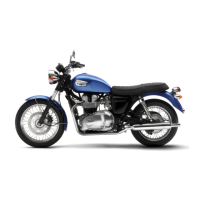
Do you have a question about the Triumph Bonneville T100 Series and is the answer not in the manual?
| Displacement | 900 cc |
|---|---|
| Transmission | 5-speed |
| Seat Height | 790 mm (31.1 in) |
| Front Tyre | 100/90-18 |
| Bore x Stroke | 84.6 mm x 80 mm |
| Final Drive | Chain |
| Fuel Capacity | 14.5 L (3.8 US gal) |
| Rear Suspension | Twin shocks |
| Front Brake | 310mm disc, 2-piston caliper |
| Rear Brake | 255mm disc, 2-piston caliper |
| Front Wheel | 18-inch |
| Rear Wheel | 17-inch |
| Wheelbase | 1, 450 mm (57.1 in) |
| Fuel System | Fuel injection |
| Frame | Tubular steel |
| Front Suspension | 41mm telescopic fork |
Explains warning symbols (Warning, Caution, Note) and their meanings.
Details the meaning of warning symbols and their application on the motorcycle.
Emphasizes using authorized Triumph dealers for motorcycle maintenance.
General safety guidelines for motorcycle operation and use.
Safety precautions regarding fuel handling and exhaust fumes.
Importance of wearing appropriate protective gear for rider safety.
Guidelines for safely parking the motorcycle on various surfaces.
Safety considerations when fitting accessories or non-approved parts.
Safety related to proper maintenance and equipment functionality.
Essential safety practices and precautions while riding.
Safe use and importance of handlebars and footrests for control.
Details on identifying and understanding various warning labels on the motorcycle.
Visual guide to identifying key parts on Bonneville T100 and T120 models.
Identification of controls and components visible from the rider's position.
Location and importance of the Vehicle Identification Number (VIN).
Location and importance of the engine serial number.
Overview and explanation of the motorcycle's instrument panel indicators.
Detailed explanation of all warning and indicator lights on the instrument panel.
Explanation of the speedometer, tachometer, and other gauges.
Explanation of selectable riding modes and their impact on performance.
Information on how Traction Control functions and its settings.
Procedure for disabling and enabling the ABS system on specific models.
Details on the Tyre Pressure Monitoring System (TPMS) and its function.
Operation of the ignition switch, steering lock, and security features.
Identification and function of controls on the right handlebar.
Identification and function of controls on the left handlebar.
Explanation of the electronic throttle system and its operation.
Instructions on how to adjust the clutch lever for rider comfort.
Instructions on how to adjust the brake lever for rider comfort.
Information on correct fuel grades and octane ratings for optimal performance.
Safe procedures and precautions for refuelling the motorcycle.
Correct method for filling the fuel tank to prevent spillage.
Guidelines for safely using the side stand and parking the motorcycle.
Instructions on how to place and use the centre stand.
Procedure for removing the luggage rack from the motorcycle.
Procedure for installing the luggage rack onto the motorcycle.
Guidelines for the initial break-in period to ensure engine longevity.
Essential daily checks to ensure safe and reliable motorcycle operation.
Step-by-step guide for safely starting the motorcycle's engine.
Instructions on how to safely move off from a stationary position.
Proper technique for shifting gears smoothly and safely.
Safe and effective braking techniques for various riding scenarios.
Explanation of ABS operation, warnings, and limitations.
Detailed instructions for safely parking the motorcycle.
Safety advice and handling considerations for high-speed riding.
Impact of accessories on motorcycle handling, stability, and speed limits.
Maximum load limits, weight distribution, and securing loads.
Instructions for passengers on safe riding and seating positions.
Importance and types of scheduled maintenance for optimal condition.
Procedures for checking, changing, and specifying engine oil.
Maintaining the cooling system, including coolant levels and types.
Maintenance, lubrication, and wear inspection of the drive chain.
Inspection, replacement, and maintenance of brake pads and fluid.
Inspection, inflation, wear, and replacement of motorcycle tyres.
Battery maintenance, removal, installation, and charging procedures.
Understanding the fuse box and procedures for replacing fuses.
Adjustment and bulb replacement procedures for headlights.
Maintenance and replacement of rear lighting units.
Maintenance and bulb replacement for indicator lights.
General procedures for cleaning the motorcycle and specific parts.
Steps for preparing the motorcycle for long-term storage.
Key technical specifications for Bonneville T100 and T120 models.
Detailed engine specifications including type, displacement, and bore/stroke.
Fuel system specifications including type, tank capacity, and pressure.
Tyre sizes and recommended cold inflation pressures for these models.
Torque specifications for various motorcycle components during maintenance.
Key technical specifications for Bonneville T120 Ace and Diamond models.
Detailed engine specifications including type, displacement, and bore/stroke.
Fuel system specifications including type, tank capacity, and pressure.
Tyre sizes and recommended cold inflation pressures for these models.
Key technical specifications for Bonneville Bud Ekins models.
Detailed engine specifications including type, displacement, and bore/stroke.
Fuel system specifications including type, tank capacity, and pressure.
Tyre sizes and recommended cold inflation pressures for these models.
Key technical specifications for the Street Scrambler model.
Detailed engine specifications including type, displacement, and bore/stroke.
Fuel system specifications including type, tank capacity, and pressure.
Tyre sizes and recommended cold inflation pressures for the Street Scrambler.
Key technical specifications for the Speed Twin model.
Detailed engine specifications including type, displacement, and bore/stroke.
Fuel system specifications including type, tank capacity, and pressure.
Tyre sizes and recommended cold inflation pressures for the Speed Twin.
Key technical specifications for the Street Twin model.
Detailed engine specifications including type, displacement, and bore/stroke.
Fuel system specifications including type, tank capacity, and pressure.
Tyre sizes and recommended cold inflation pressures for the Street Twin.
Key technical specifications for the Thruxton RS model.
Detailed engine specifications including type, displacement, and bore/stroke.
Fuel system specifications including type, tank capacity, and pressure.
Tyre sizes and recommended cold inflation pressures for the Thruxton RS.
Regulatory compliance for radio equipment devices per EU Directive 2014/53/EU.
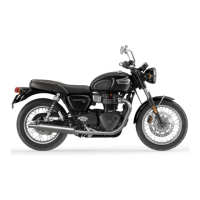
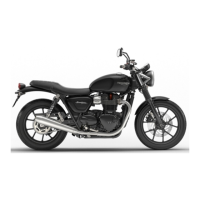
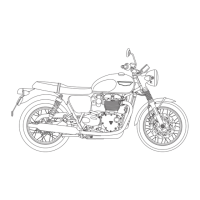
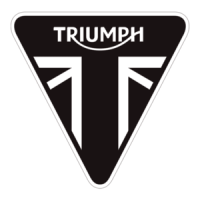
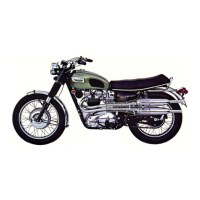





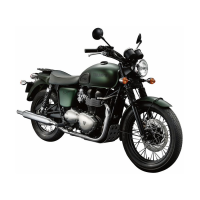
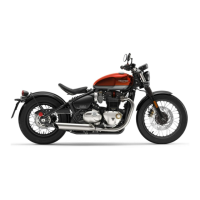
